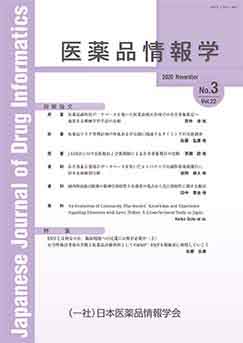Volume 22, Issue 3
November
Displaying 1-7 of 7 articles from this issue
- |<
- <
- 1
- >
- >|
Original article
-
2020Volume 22Issue 3 Pages 123-130
Published: November 30, 2020
Released on J-STAGE: December 15, 2020
Download PDF (1072K) -
2020Volume 22Issue 3 Pages 131-134
Published: November 30, 2020
Released on J-STAGE: December 15, 2020
Download PDF (734K) -
2020Volume 22Issue 3 Pages 135-140
Published: November 30, 2020
Released on J-STAGE: December 15, 2020
Download PDF (859K)
Note
-
2020Volume 22Issue 3 Pages 141-146
Published: November 30, 2020
Released on J-STAGE: December 15, 2020
Download PDF (611K) -
2020Volume 22Issue 3 Pages 147-152
Published: November 30, 2020
Released on J-STAGE: December 15, 2020
Download PDF (1223K) -
2020Volume 22Issue 3 Pages 153-161
Published: November 30, 2020
Released on J-STAGE: December 15, 2020
Download PDF (2027K)
Feature article
-
2020Volume 22Issue 3 Pages N1_3-N3
Published: November 30, 2020
Released on J-STAGE: December 15, 2020
Download PDF (773K)
- |<
- <
- 1
- >
- >|
